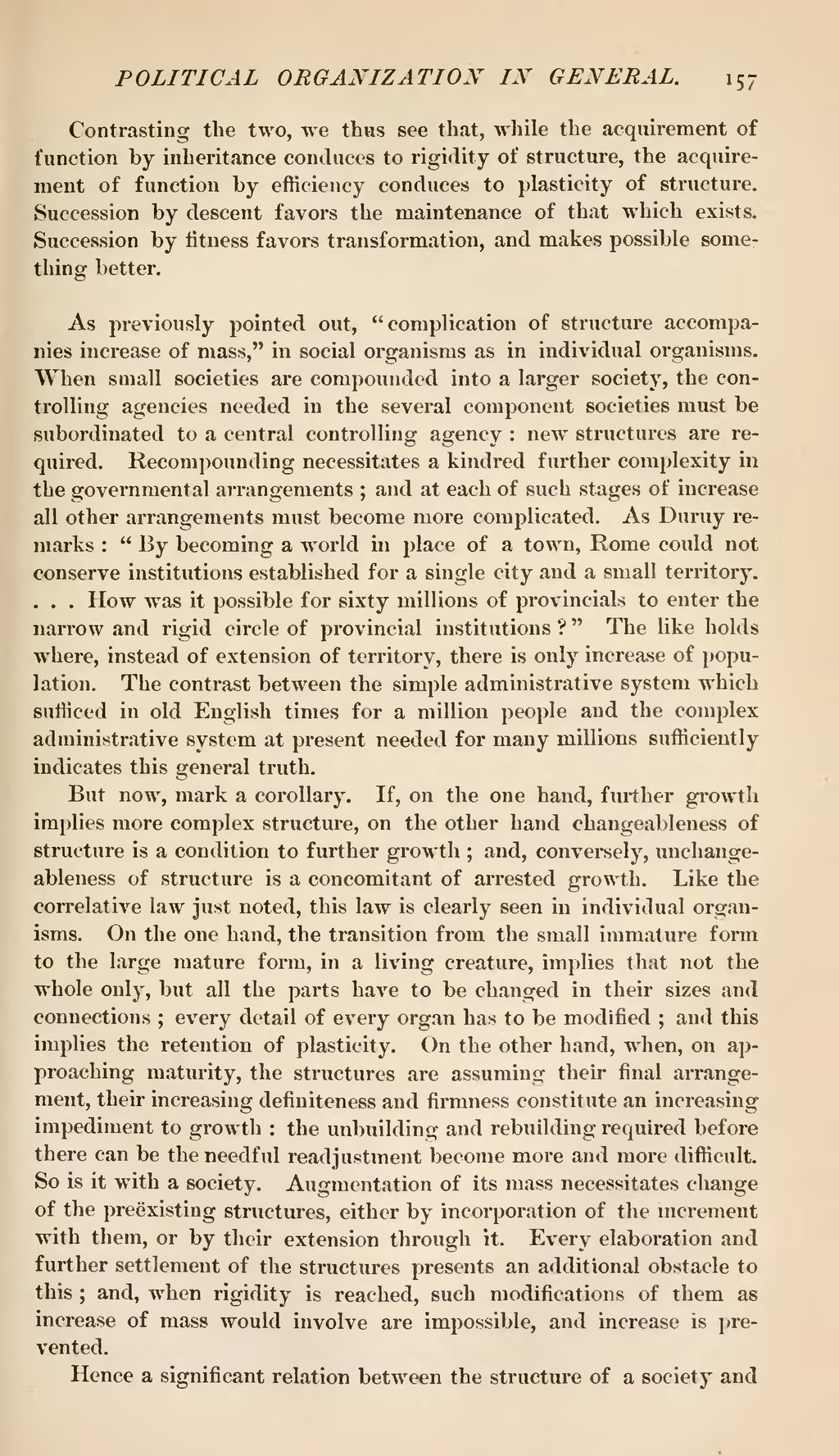Contrasting the two, we thus see that, while the acquirement of function by inheritance conduces to rigidity of structure, the acquirement of function by efficiency conduces to plasticity of structure. Succession by descent favors the maintenance of that which exists. Succession by fitness favors transformation, and makes possible something better.
As previously pointed out, "complication of structure accompanies increase of mass," in social organisms as in individual organisms. When small societies are compounded into a larger society, the controlling agencies needed in the several component societies must be subordinated to a central controlling agency: new structures are required. Recompounding necessitates a kindred further complexity in the governmental arrangements; and at each of such stages of increase all other arrangements must become more complicated. As Duruy remarks: "By becoming a world in place of a town, Rome could not conserve institutions established for a single city and a small territory. . . . How was it possible for sixty millions of provincials to enter the narrow and rigid circle of provincial institutions?" The like holds where, instead of extension of territory, there is only increase of population. The contrast between the simple administrative system which sufficed in old English times for a million people and the complex administrative system at present needed for many millions sufficiently indicates this general truth.
But now, mark a corollary. If, on the one hand, further growth implies more complex structure, on the other hand changeableness of structure is a condition to further growth; and, conversely, unchangeableness of structure is a concomitant of arrested growth. Like the correlative law just noted, this law is clearly seen in individual organisms. On the one hand, the transition from the small immature form to the large mature form, in a living creature, implies that not the whole only, but all the parts have to be changed in their sizes and connections; every detail of every organ has to be modified; and this implies the retention of plasticity. On the other hand, when, on approaching maturity, the structures are assuming their final arrangement, their increasing definiteness and firmness constitute an increasing impediment to growth: the unbuilding and rebuilding required before there can be the needful readjustment become more and more difficult. So is it with a society. Augmentation of its mass necessitates change of the preexisting structures, either by incorporation of the increment with them, or by their extension through it. Every elaboration and further settlement of the structures presents an additional obstacle to this; and, when rigidity is reached, such modifications of them as increase of mass would involve are impossible, and increase is prevented.
Hence a significant relation between the structure of a society and

